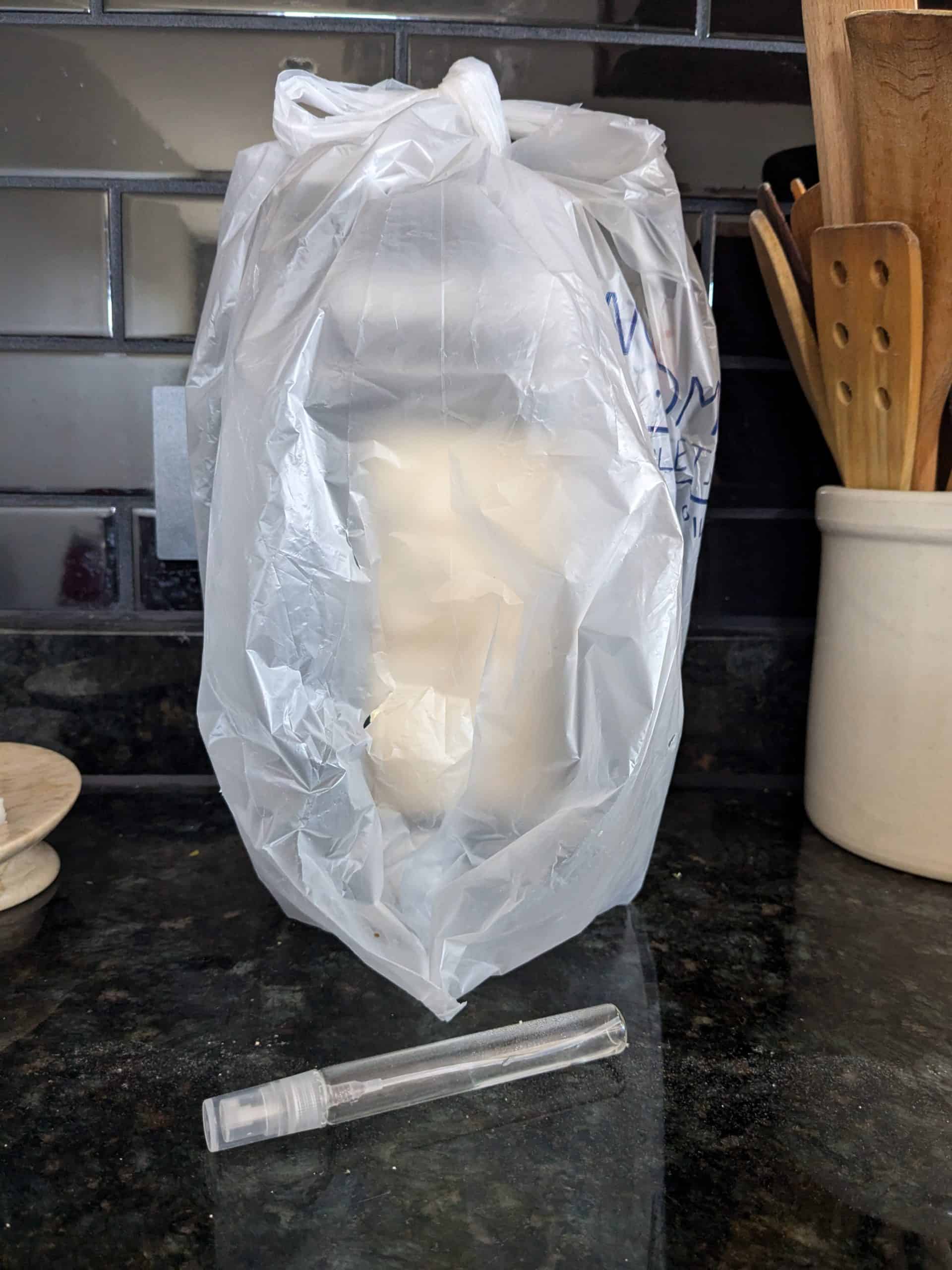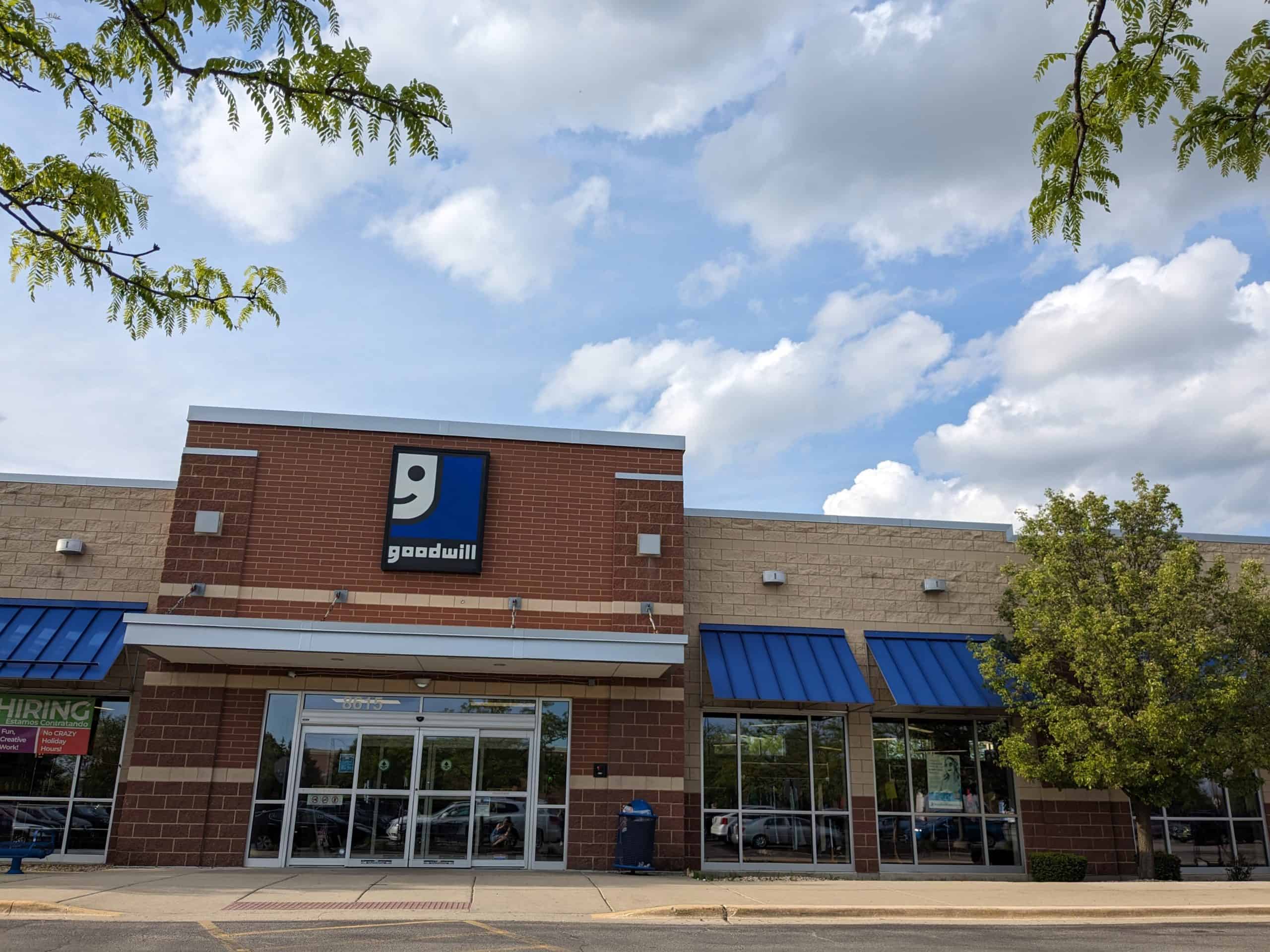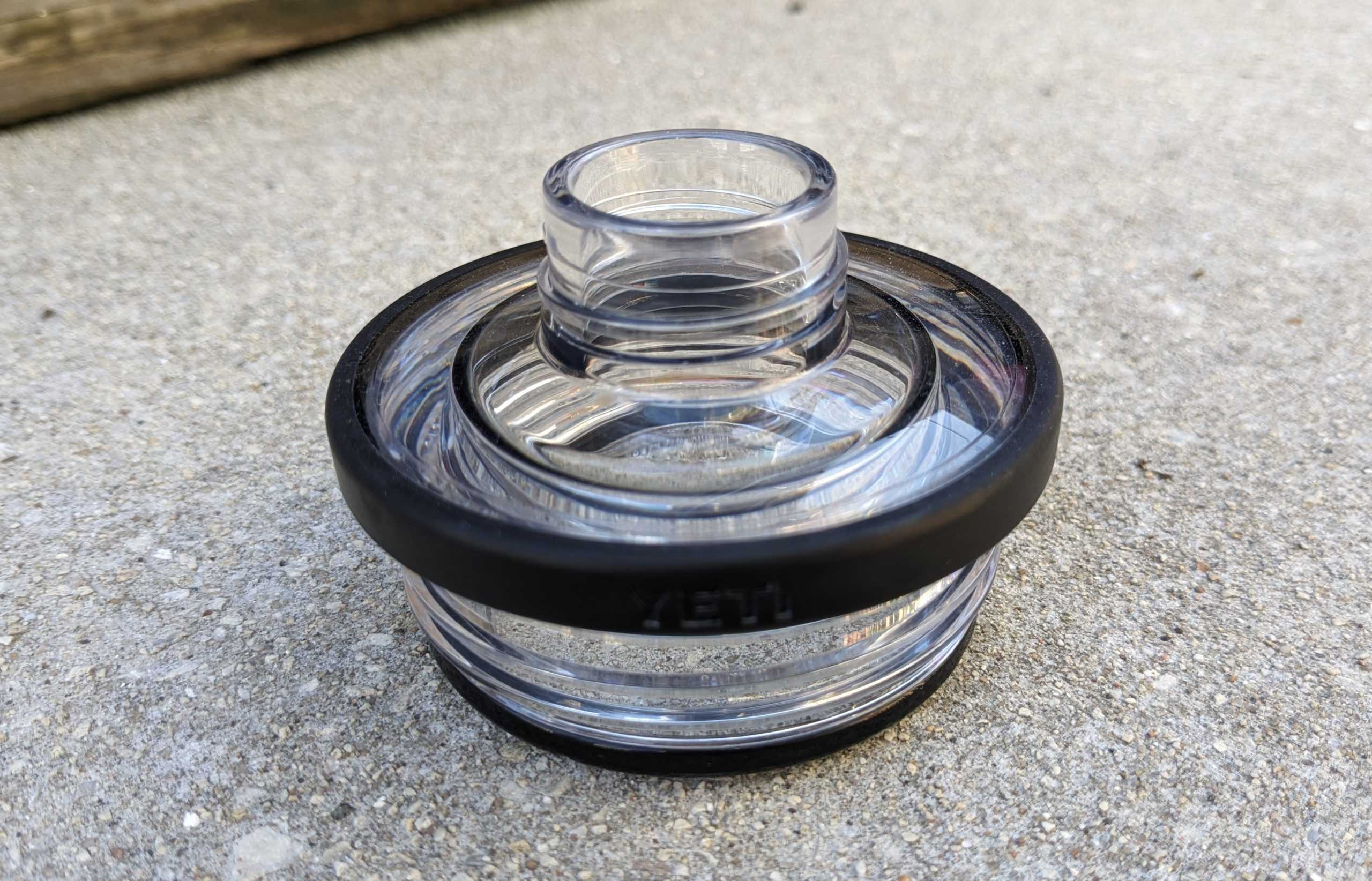There’s a simple reason many gamers refuse to loot. It takes you out of the action and into inertia. You open a barrel, for example, and it contains an axe. You closely examine it, and then compare it with your equipped axe. Yours is better. Unsatisfied, you open another barrel. You find a gem. Hurrah! Alas—your inventory is full. Searching for something to discard, you examine each stored item. Merits and demerits of crafting items, gear, and weapons whirl through the imagination. You remember an upgrade you’d planned to make yesterday.
Meanwhile the game’s day turns to night. Far-off mobs cry out for slaughter. The beautiful woman who assigns your missions is alone, weeping. It’s about time to forget about the loot and get on with the game.
But I never passed up a loot box. I enjoy some lethargy in games. On my sofa at 1 a.m. with the controller drifting out of my hands, I myself am in a profound state of lethargy. Must we perpetrate perpetual war? A never-ending state of slaughter? More important, doesn’t the thrill of finding an unbelievable treasure in a cardboard box rival the pleasure of taking down an enormous fire-breathing octopus?
For me it did. Finding items to use, sell, or hoard was something I anticipated in every game I played. It can confer enormous advantages and streamline future crafting or gear pursuits. Rote unboxing can surprise, delight, and add levity to the serious pursuit of leveling up. All that changed when I played Fallout 76 and Fortnite: Save the World.
Gamers have different ideas about what makes a loot system good or bad. Usually, random number generators are the boogeyman, causing unfair drop rates and senseless item stats. Other gamers curse limited inventory or crafting systems that prohibit them from making use of all they’ve found. Microtransactions and their slippery partnerships with earned game loot and character progression can make players feel like the game kidnapped them and asked for ransom.
By these standards, F76’s and Save the World’s loot systems are mostly acceptable. So why did these games turn me away from bags and boxes forever? To navigate the morass of loot systems, allow me to share a few real-world hypotheses about real-world things, belongings, items, and possessions. Thinking about the real-life act of searching and discovering will demonstrate what makes looting fun and profitable and what makes it a drag.
Common Sense About Real-World Loot
Finding Something You Need Sucks
Finding something you need is one of the most frustrating, painful, enraging ways to spend time. A deadline adds to the torment. Consider misplacing your keys or wallet before leaving for work. This has the power to destroy your day. Doing mental gymnastics to remember everywhere you may have been the day before, you rush through the house and overturn everything on the table, countertop, and sofa. Hell, you even check the fridge. Where could they have fallen? Where might you have flung them? How much time can you devote to looking before you’re late? You must start to plan for the scenario in which you won’t find them at all. The act of searching for something you need is fundamentally stressful. There’s no pleasure involved in the pursuit.
We Only Ransack Others’ Belongings For A Sizable Reward
Rummaging through other people’s belongings is only rewarding if it entails sizable—if not enormous—personal or professional gain. This is the reason people shop in thrift stores or estate sales. When a woman goes home with a pile of gently used jeans and handbags, she saved a few hundred dollars off retail price. An antiques dealer who locates a Tiffany lamp at an estate sale has a fat $7,000 paycheck in her future. Thieves share that motive—monetary gain.
It’s delightful to find an unknown treasure or je ne sais quoi among the rubble of human belongings, and the act of shopping and looking through items is a pleasure unto itself. However, thrift stores would go out of business if their customers were only searching for unusual trinkets and ephemera. People go there because they believe they have something to gain, and that something is usually money saved, not the items themselves, nearly all of which are readily available in other marketplaces.
Treasure Isn’t Random
Genuine treasure-hunting is a process with a goal in mind. Think metal-detecting. The goal is gold (or platinum!). The items you’ll encounter while the machine is beeping are limited to metal. The location is chosen rationally according to historical events or population density. You might mess around with a metal detector in your backyard, but you’d hardly call yourself a treasure hunter or expect to find anything except an aluminum can.
We Harvest Materials As Quickly As Possible
Harvesting crops or gathering materials for a project or purpose is a chore people strive to complete as quickly and efficiently as possible. Farmers don’t harvest one row of soybeans, and then take off fishing for a couple days before returning to the field to harvest one more row. Rather, when the soybeans are ready, they climb into the combine and harvest as much of their fields as daylight and working conditions allow.
People don’t plan to build a gaming P.C. and then stop by Best Buy after work to browse components and buy a graphics card that looks like it might work. They research what they need, learn where the best parts are cheap and available, acquire them as quickly as possible, and then get to work building their P.C. Anything that delays our speedy and efficient harvesting and gathering is a headache—a week of rain, for example, will affect the farmer’s selling schedule and piss him off; parts on backorder will frustrate the P.C. builder.
Pointless Ransacking, Inefficient Harvesting, Punishing Searching, and Random Treasure In Fallout 76
Nobody has anything good to say about F76—upon its launch, it became a laughingstock of the game community. Having played F76 for about a month, we at Co-op Gaming Dot Info agree that nothing in the game is well-designed or worth a mortal’s time. However, it’s worth considering how a survival looter game created what could be the worst loot system of all time.
F76 incites players to loot. Then it trains them to view all items as junk that slows them down and contributes to their decline. In each F76 town, there are several hundred if not a thousand potential looting actions to take—boxes, drawers, and cupboards to open. The majority of what you’ll find are crafting supplies, or junk that can be deconstructed into crafting supplies. It’s not a game where you can skip crafting—your survivability will plummet if you’re not building your home base, or C.A.M.P.
Until your C.A.M.P can produce food, water, and medicine, you’ll also depend on household looting for consumables, including the all-important RadAway, which purges radiation. You’ll be able to produce RadAway at an unknown future time—after earning its recipe from quest that have a chance to drop it as a reward. “Random,” of course, could mean never.
Players are given very little inventory capacity and become “overburdened” by weight rather than quantity of items. That means that in addition to evaluating the usefulness of each consumable or crafting item, players must decide which things are too hefty. Weapons, ammunition, and armor are included in weight totals, and they’re heavy.
Becoming overburdened comes with harsh penalties—it prohibits fast-travel and drains AP, the resource used for sprinting and aiming in the combat system. That makes returning to C.A.M.P to dump items in the stashbox dangerous and time-consuming. Players are better off taking four or five minutes to evaluate their inventory, drop a few items, and then continue their mission and avoid further looting.
While you shuffle your belongings and forage in abandoned buildings, your character suffers. His food and water bars run down and his radioactivity indicator climbs into the red. To continue, you must eat, drink, and inject yourself with RadAway. Missions can require considerable travel; when travel time is combined with loot time, consumed resources skyrocket.
Non-stop rummaging with very little reward, but plenty of pitfalls and harsh penalties? Check. Hugely inefficient harvesting that may never net you the parts and components you need? Check. Actively dying and using resources during every moment spent engaging with this senseless, elaborate, punishing system? Check! But wait—there’s more. How might a player acquire an awesome legendary weapon or gear piece in F76?
“Valuable” loot in the game such as weapons and power armor isn’t found inside containers. Rather, it’s dropped by enemies or spawns at specific map locations. Decent loot is rare. A player is unlikely to discover it unless he’s using online guides. During our month of playing, John located a single bobblehead (a special item that provides a brief buff) and a single suit of power armor. Each of us found (or received as a quest reward) one one-star legendary weapon and one one-star legendary gear piece—all of which became useless when we leveled up.
Players on Reddit report that some servers drop loads of legendary loot and others drop none, making server hopping the primary method of finding great loot and farming in F76. Server hopping, or logging out and returning to spawn in a different server, is as far from fun, active gameplay as a “video game” can get. I’m not surprised that it’s become a mainstay of F76 play—it’s is the most rational, efficient way to get what you want in the game.
This video by InnovSurvivalist epitomizes F76’s looting playstyle. It offers players instructions on how to farm badges needed for—you guessed it—backpack mods, including a high capacity mod. Backpacks were added to the game after we’d already uninstalled it. I’m sure backpacks offer players a bit more breathing room within the constrictive loot system, but InnovSurvivalist’s video demonstrates that the system is functioning at its finest, punishing players and wasting their time as they scramble and perform elaborate stunts to get a just a random chance at what they need to make their game playable.
To receive a badge, players can either complete an elaborate, difficult, time-consuming event, or hope to receive one as a random reward for completing a simpler quest. They’re given what InnovSurvivalist estimates is a one in ten chance of receiving a badge for completing these simpler missions, and they need a small heap of badges to receive their upgrade. In order to repeat these simple missions until they’re given a badge, players must server hop to locate the applicable event, which can only be completed at night, and cannot be completed if other players have triggered it before you. They then must complete the quests ad infinitum, relogging and triggering the event countless times, until Lady Luck smiles at them and they receive a badge as a reward.
Looting couldn’t get more abstracted than this. Hours of relogging. Hours of completing the same content. Hours spent just to make the game’s primary mode—looting—more playable. This is the kind of thing that makes me feel stupid for liking video games. Looting is F76’s bread-and-butter gameplay, and every act of looting in this game would be better done by a bot. Human players attempting to operate within the system are punished for their errors and forced to resort to bizarre, elaborate methods to lessen their burdens.
Harvesting and Searching on a Deadline in Fortnite: Save the World
When it comes to legendary weapons, Fortnite: Save the World’s system is logical, flexible, and allows players themselves to determine the quality of their guns. Players are given gun blueprints. They can gold any blueprint they’d like. They can alter and improve its bonuses. Crafting or upgrading a gun doesn’t require hours of manually searching for and collecting specific crafting supplies across a map. Obtaining the necessary materials is a simple matter of completing missions—each mission reward, from specialty crafting items to gold, is public information, listed in advance for players to pursue. We’ve written more about this in our review of Save the World.
Treasure chests in Save the World are alright, too. You can ignore them. You can have the most powerful guns and play the entire game without ever crawling into a hovel and opening a chest.
Save the World players don’t need to search for weapons/gear, treasure chests, or crafting supplies. These are the three pillars of loot! These three demons push our heads into boxes and make quests take twice as long! If Save the World dispensed with them, why am I complaining about its loot system?
Save the World’s entire progression is designed around the concept that you’ve misplaced your keys and have to find them before going to work. In order to level up, players must search maps for main quest objectives, which can be something as small as a statue or as large as a building. In each map they enter, they must also complete a mission objective, usually by building defenses and destroying zombie hoards. In most maps and game modes, players don’t have enough time to both seek out a quest objective and also build adequate defenses to complete their mission objective. Find your keys as quickly as possible, then get to work—that’s the concept in each map.
In the beginning of the game, quest objectives are small, relatively simple to locate, and occur in abundance throughout the map. They’re even marked with yellow exclamation points on the minimap. As your character progresses, they become more nebulous. Often they’re just buildings, difficult or impossible to distinguish from the rest of the structures on the enormous map.
Traversing the border of a Save the World map takes several real-life minutes. The task of searching that entire map was never a pleasure. It became a torment once we no longer knew if we’d find what we sought. Often the two of us began a mission and spent the entire time—all twenty to forty minutes—searching for our main quest objective without ever finding it. Sometimes it seemed that the quest objective simply hadn’t spawned in the map we entered. We often had to enter every structure we could find and wait to see if one triggered our quest completion. This was the reason we eventually stopped playing the game.
Because each Save the World player’s progression depends on locating items, it makes sense that over time, drawing closer to the end of the game, locating those items and leveling up becomes more challenging. This simplistic logic ruined the game. Instead of making objectives harder to find, Save the World ought to have asked players to complete more difficult challenges. They could have “found” more mini-bosses or storm-chests, instead they have to learn the way a “spa” building renders in the mini-map as opposed to a “fort” building.
My final complaint: the pickaxe. Every Save the World player needs stone, wood, and metal for ammunition as well as for building structures and defenses. The pickaxe gets you those mats. Sure, at first it’s fun to demolish each car, fire hydrant, statue, and tree that stands in your way, but after fifty or a hundred maps and missions, pickaxe activity becomes the most repetitive, mind-numbing wretchedness the game requires. You can’t go into Fortnite Creative, fill up your mats, craft 300 bullets and return to finish your quest in Save the World; all harvesting must be completed in some kind of map in which you’re completing some kind of mission. Every moment spent with the pickaxe is a moment you’re not building defenses or slaughtering enemies.
Still, harvesting with the pickaxe is consistent and relatively efficient—two things we know make harvesting A-OK in real life. The salt in Save the World is that one character class—the Outlander—has a far more efficient harvesting tool than the pickaxe. Outlander’s “Anti-Material Charge” enables a pickaxe “heavy attack.” In one hit, this heavy attack deconstructs anything, even enormous trees that take ten or twenty strokes to take down with the pickaxe.
Given the existence of Anti-Material Charge, and the fact that all players need mats to craft ammo and buildings, it’s irrational for a player to play any character class except Outlander, just as it would be irrational to harvest soybeans by hand if a combine is available. Every time I played a mission as a different class, I watched my metal, wood, and stone totals fall with a sinking feeling. Would I run out and be forced to use the pickaxe, or could I hold off until the next mission and switch to Outlander? Choosing between harvesting efficiency and inefficiency isn’t a choice players should have to make.
CONCLUSION
Ultimately, looting in games serves and mirrors some compulsion that we all share: the love of things. The need to search for treasure, upgrade our belongings, and sift through items is unstoppable. Though these days we’re told to call the police if we see a mysterious package in a public place, there’s something alluring about a closed box. It begs to be opened. That’s why people watch Storage Wars—if a door is locked, everyone wants to see what’s behind it. Archaeologists spend decades in the desert hoping to find the sealed-away baubles of long-dead kings. Even animals adore things—male gentoo penguins search for the smoothest pebble to give to their mate. Every dog is excited to receive a new toy.
That’s why it sucks when a game doesn’t manage to scratch that itch. After playing F76, I avoided boxes and barrels like they were AoE damage. After playing Save the World, any quest in another game that required locating an item sent me over the edge. I would have preferred to use a flamethrower on every glimmering plant and flower I saw rather than be forced to collect it. If a loot system goes against our human operating principles and desires, or forces us into its own universe of bizarre, esoteric rules, it fails to motivate us. We begin to feel our activities in the game are worthless. Reading complaints about the drop rates and loot systems in recent games such as Anthem and Division 2 reminds me of something from Borderlands 2. When an enemy was blasting you with an amazing gun and you killed him, he dropped the same gun he was using to shoot you moments before. Modern games could use a bit more of that realism.
Addendum: Good Loot in Monster Hunter: World
Among games I’ve played, Monster Hunter: World is the one that most closely mirrors our real-life human activities and desires.
The player needn’t locate items throughout the map to complete his quest. In fact, MH:W gifts each player a handful of helpful items (health potions, traps, and portable food) at the outset of each quest.
Players do need to locate the enemy—the monster they’re hunting. If the player has tracked and hunted the same monster many times, its location may already be marked on the map. Clicking on the footprints and spoor scattered across the ground is fast and efficient, and it isn’t crucial to the player’s success killing the monster in any given mission.
While a MH:W player travels the map in search of beasts, he passes countless crafting nodes. Some nodes are more appealing than others. Crystal formations and bone piles, for example, drop items that can be used to craft gear. Plant nodes contribute ammo or potion ingredients. “Rare” resource nodes can drop special food ingredients that improve the buffs the player receives when he eats his hearty meal at the outset of each mission.
Despite the prevalence of these appealing items, the player needn’t stop to pillage all he sees. At any time, he can return to the map to collect and sort items at his leisure. In fact, discovering a rare gather point marks it on the player’s map for future use. All node locations remain the same when a player returns to a map, and each map type contains its own custom, predictable set of nodes. Players can exclusively gather the nodes they commonly use, the ones that give the most advantage, and ignore the rest. MH:W makes gathering and harvesting as fast, habitual, and efficient as we expect in real life.
So what about the rummaging and the treasure hunt? In MH:W, the best loot is monster body parts. Players loot the corpse of monsters they’ve killed and are given parts as mission rewards. These parts are used to craft gear. In the forge, where gear is crafted, recipes are unlocked as players discover and track new monsters. You learn about a new, desirable piece of gear and create a plan to acquire it. To collect the ingredients necessary to craft a new piece of gear, a player must “break” all the parts of the monster that drop the requisite supplies (destroying a monster’s leg will drop his claw, for example). Monster “gems,” the rarest and most legendary monster component, drop randomly when you kill a monster whose gem you want, or as a reward for completing a difficult mission involving said monster.
In MH:W, looting a monster and completing a hunt always gives you the rewards you expected when you chose the mission and earned from breaking what you broke. It never delivers unwanted, undesirable, or incomprehensible junk. The process of acquiring amazing gear is a matter of setting a goal and achieving it, part by part, same as building a P.C. And the hunt for the treasured monster gems is about as sensible as using a metal detector—you’re only going to hunt where the gem might drop, and you hope your chances today are good.






